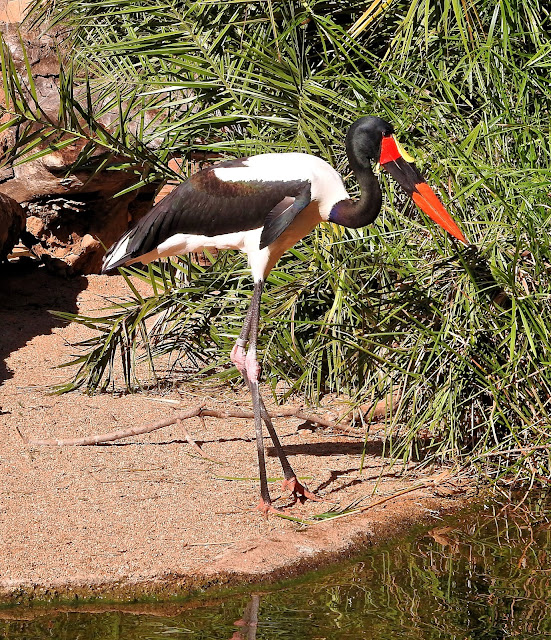https://www.inaturalist.org/taxa/320611-Neoscona-subfusca
This Blog contains Wildlife, Plants and Bird Photos from Walks, Safaris, Birding Trips and Vacations. Most of the pictures have been taken with my Nikon P900 and P950X cameras. Just click on any image for a larger picture. On the right column under the Blog Archive are the entries by date. Below that under Animal categories all the diffent species of Animals, Birds, Insects and Plants contained in the website are listed. Clicking on any entry will show all the entries for that species.
TOTAL PAGEVIEWS
TRANSLATE
Tuesday, 23 November 2021
Monday, 22 November 2021
6-6-2019 MOREMI CAMP, BOTSWANA -BLACK HERON (Egretta ardesiaca)
The black heron is a medium-sized wading bird known for its striking black plumage and unique "canopy feeding" behavior, where it uses its wings to create shade to attract fish. It primarily inhabits wetlands across Africa, south of the Sahara, and other regions like Madagascar, nesting in colonies and feeding on fish, insects, and crustaceans. During breeding season, adults develop long, wispy plumes on their heads.
Appearance
Size: Approximately 42.5 to 66 cm (16.7 to 26.0 in) long, with a weight between 270 and 390 g (9.5–13.8 oz).
Plumage: Dark grey to black overall, with a slaty or bluish sheen.
Beak: Black.
Legs and Feet: Black legs, with yellow feet in adults.
Breeding Plumage: Adults grow long, black, shaggy crests on their heads.
Sunday, 21 November 2021
Saturday, 20 November 2021
Friday, 19 November 2021
Thursday, 18 November 2021
15-11-2021 LORCA, VALENCIA - EUROPEAN WOOD MOUSE (Apodemus sylvaticus)
The wood mouse (Apodemus sylvaticus) is a murid rodent native to Europe and northwestern Africa. It is closely related to the yellow-necked mouse (Apodemus flavicollis) but differs in that it has no band of yellow fur around the neck, has slightly smaller ears, and is usually slightly smaller overall: around 90 mm (3.54 in) in length and 23 g in weight.ope and is a very common and widespread species, is commensal with people and is sometimes considered a pest. Other common names are long-tailed field mouse, field mouse, common field mouse, and European wood mouse. This species is a known potential carrier of the Dobrava sequence of hantavirus which affects humans and may pose serious risks to human health.
Wood mice inhabit forests, grasslands, and cultivated fields, tending to seek out more wooded areas in winter. Almost entirely nocturnal and terrestrial, wood mice burrow extensively, build nests of plants and live in buildings during harsh seasons. It is one of the most intensively studied species in the genus. In Europe, it ranges north to Scandinavia and east to Ukraine. The wood mouse is also found in northwestern Africa and on many Mediterranean islands.
Wood mice are primarily seed eaters, particularly seeds of trees such as oak, beech, ash, lime, hawthorn, and sycamore. If seeds are plentiful on the ground, they carry them back to their nests/burrows for storage. They may eat small invertebrates such as snails and insects, particularly in late spring and early summer when seeds are least available. Later in the season they will eat berries, fruits, fungi and roots. In winter, they may prey on hibernating bats, but this is still debatable.
Wood mice are mainly active during the dark, probably having evolved so to avoid predation, employing several anti-predatory strategies, though breeding females may be more active in daylight in order to collect sufficient food. While foraging, wood mice pick up and distribute visually conspicuous objects, such as leaves and twigs, which they then use as landmarks during exploration. If a wood mouse is caught by its tail, it can quickly shed the end of it, which may never regrow. Despite its name, it prefers hedgerows to woodland. During the colder months, wood mice do not hibernate; however, during severe winter seasons they can fall into a torpid state, a decrease in physiological activity.
Wednesday, 17 November 2021
Subscribe to:
Comments (Atom)





%2020.jpg)











































